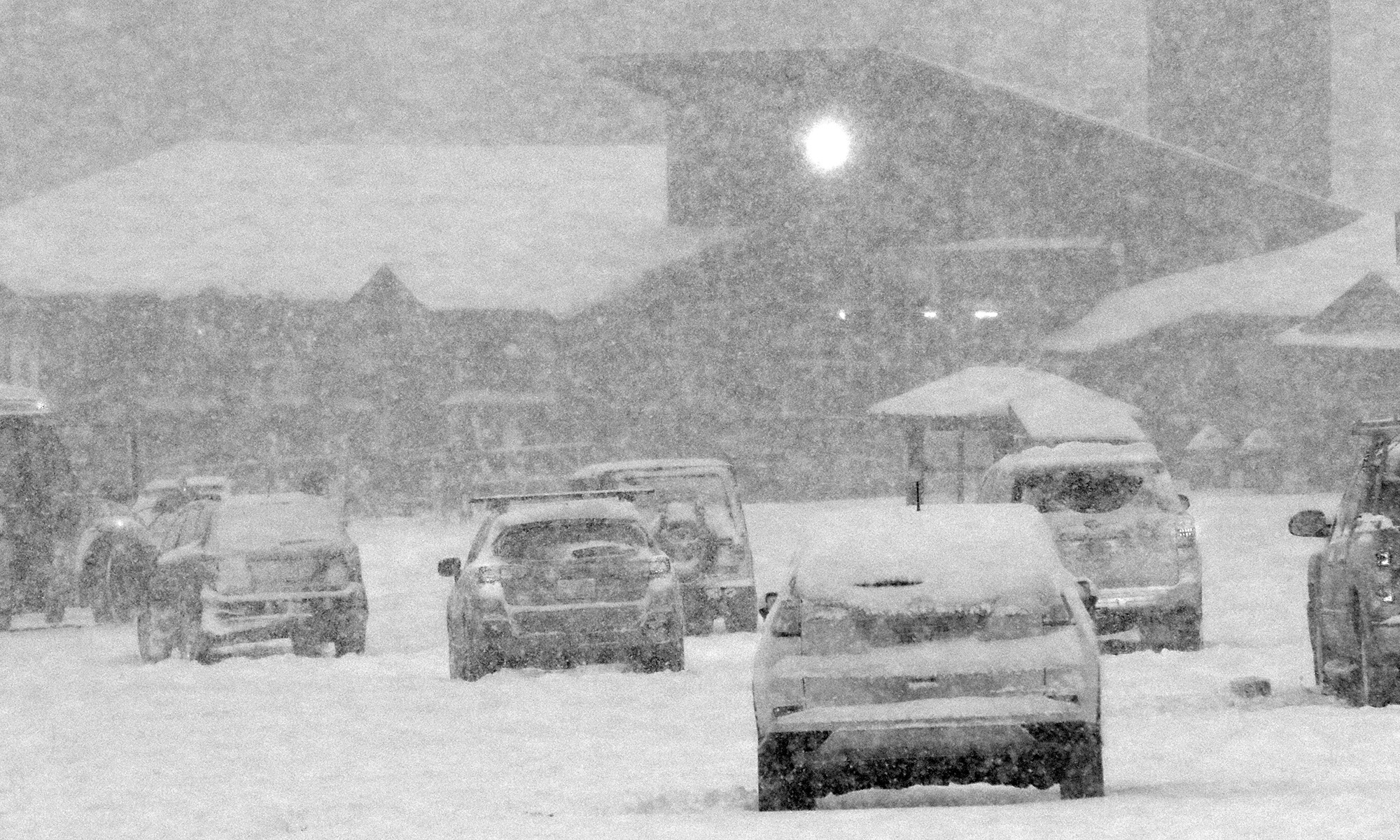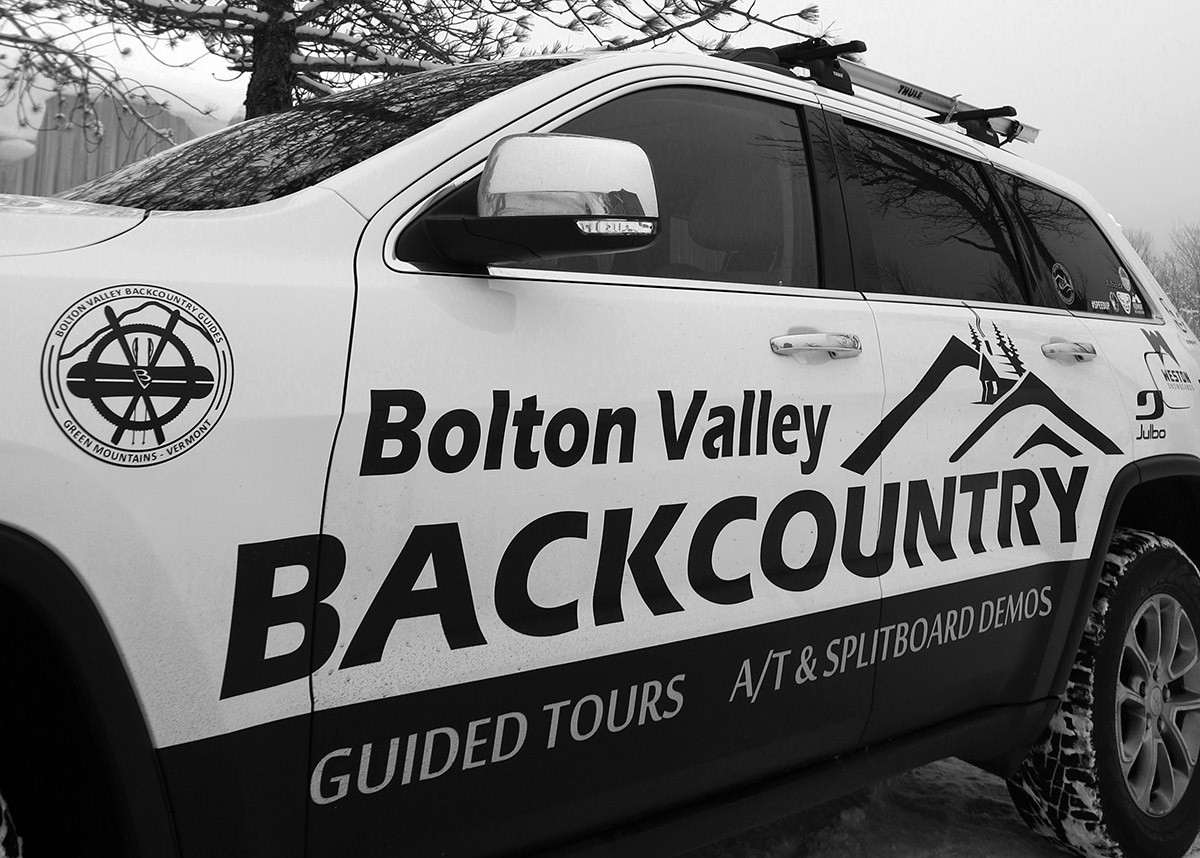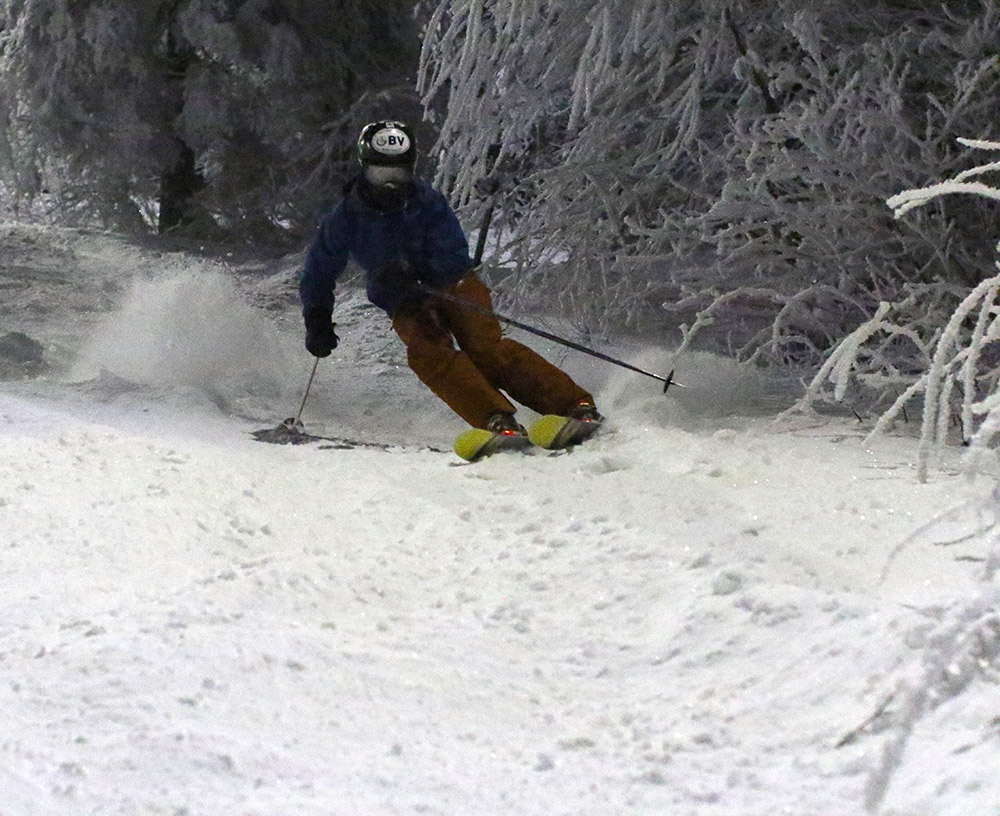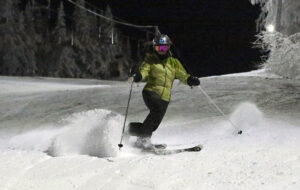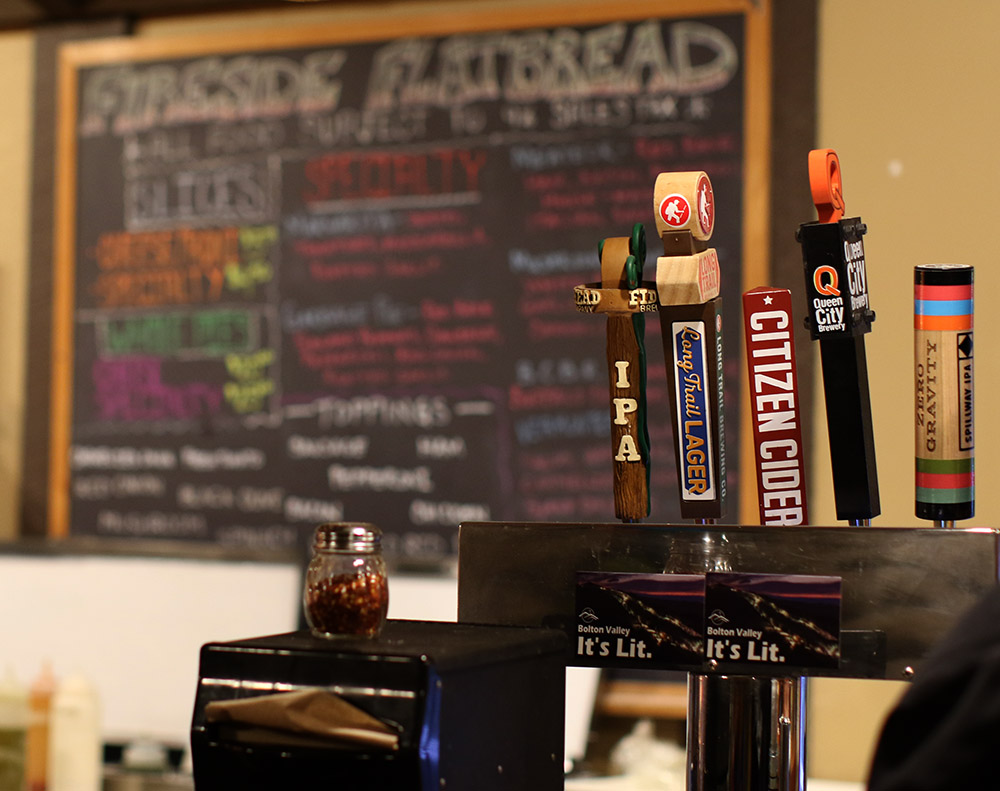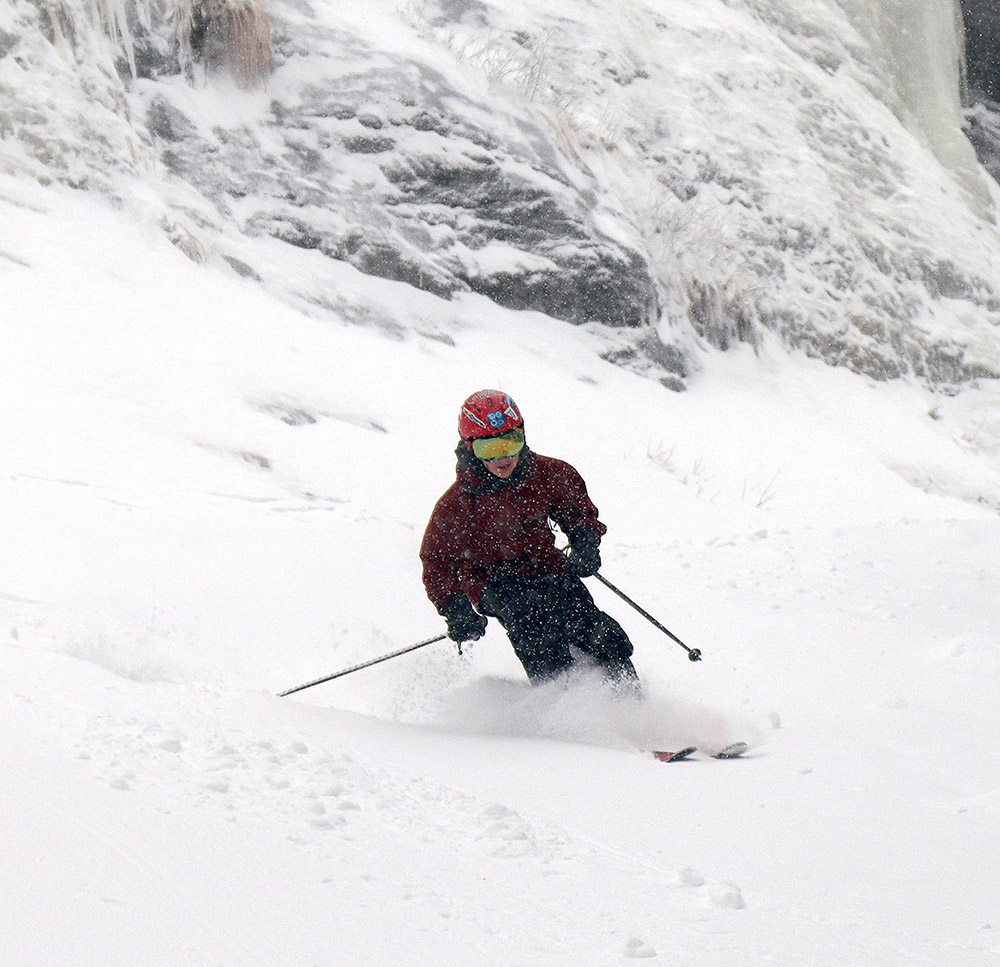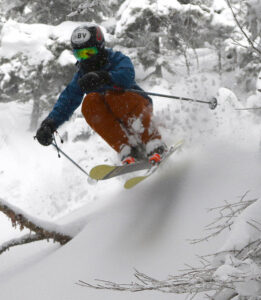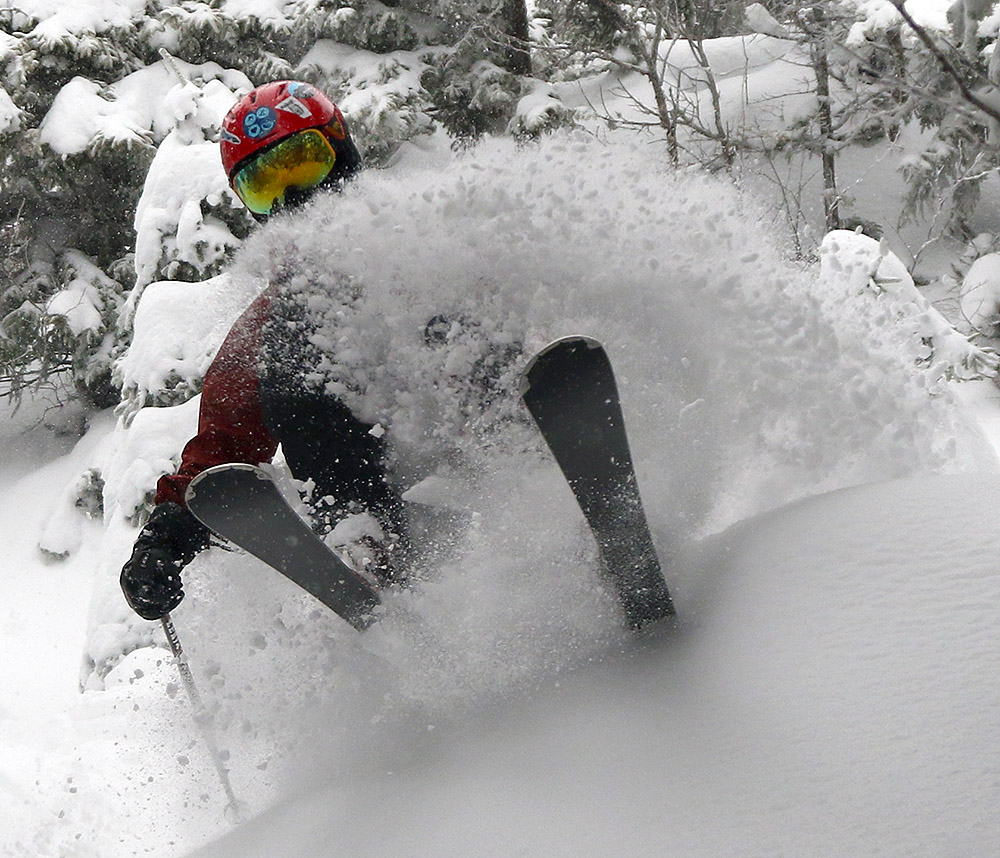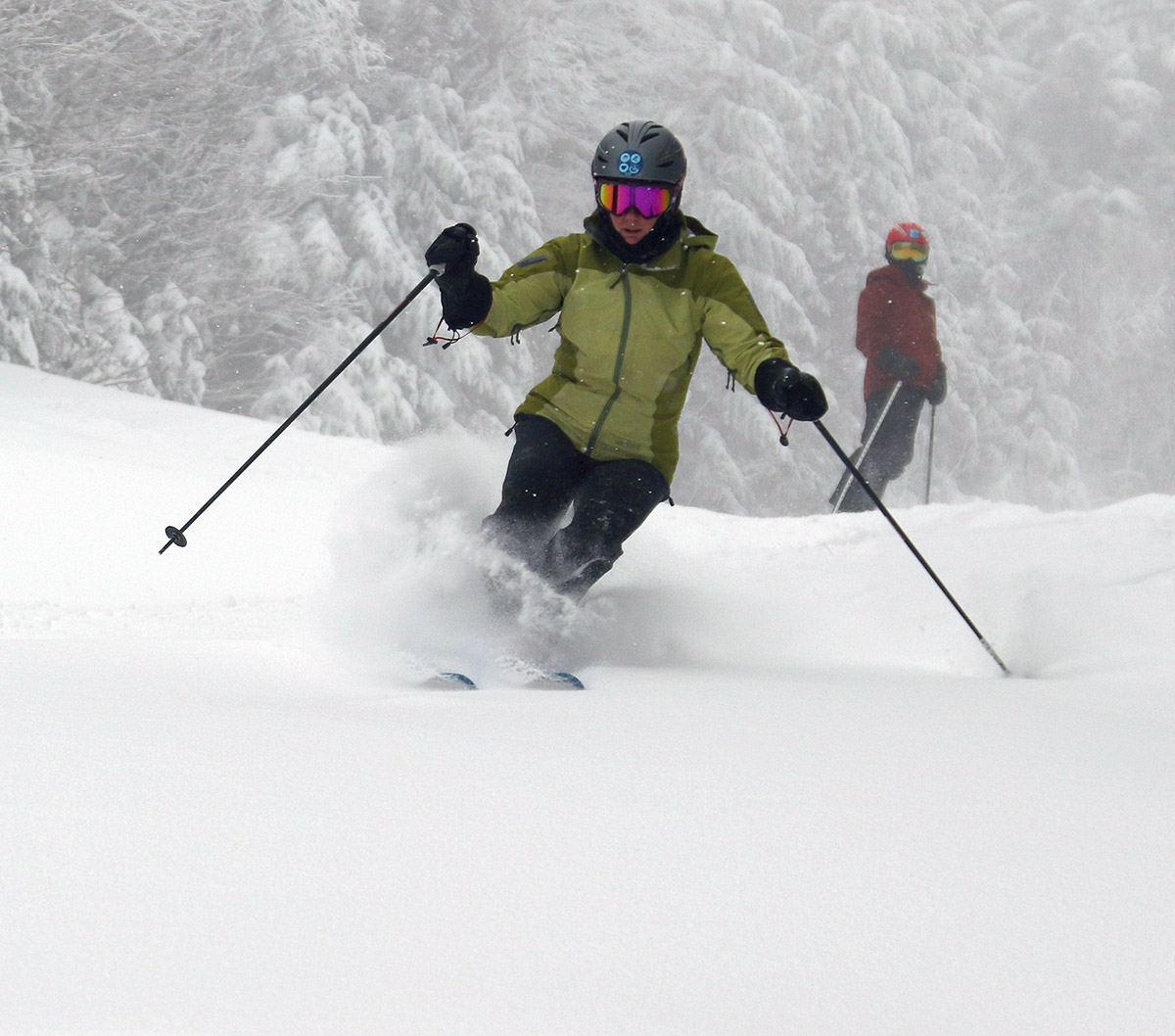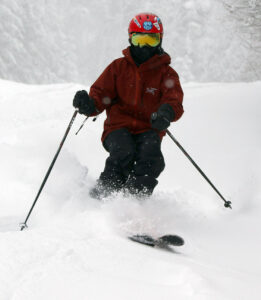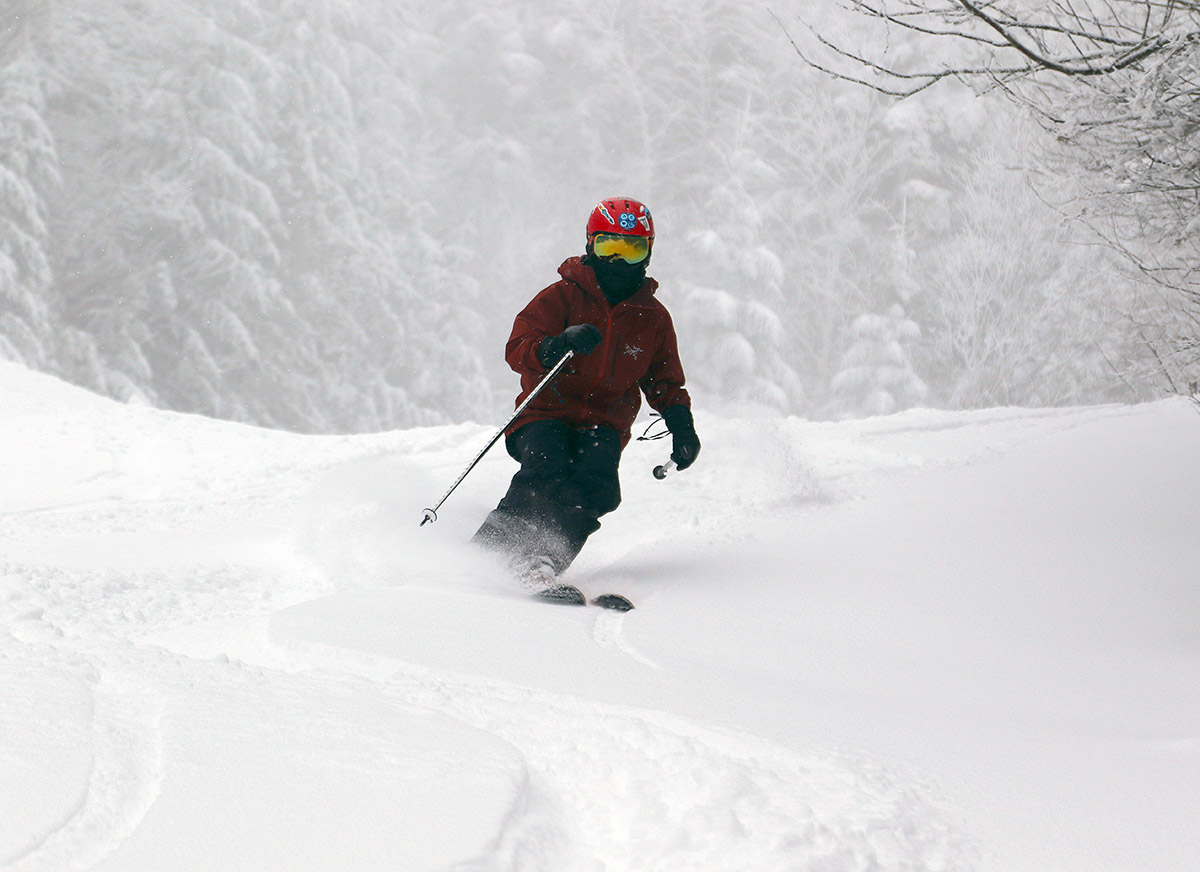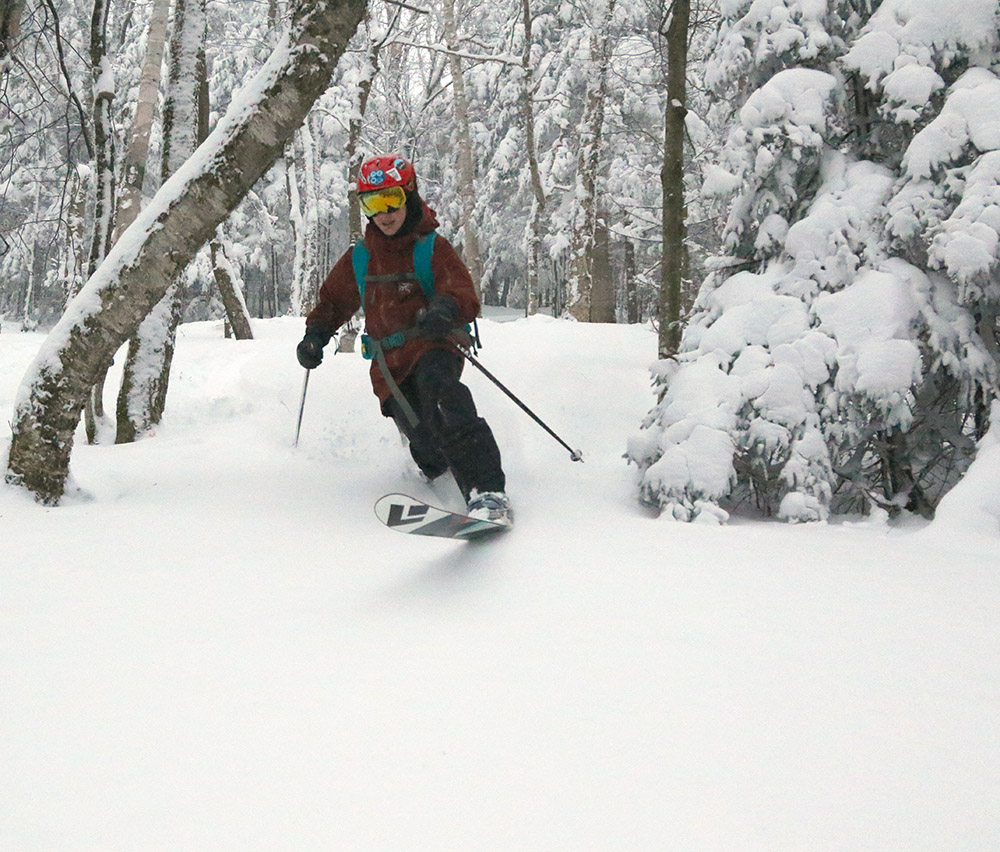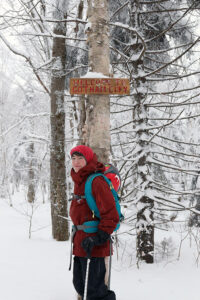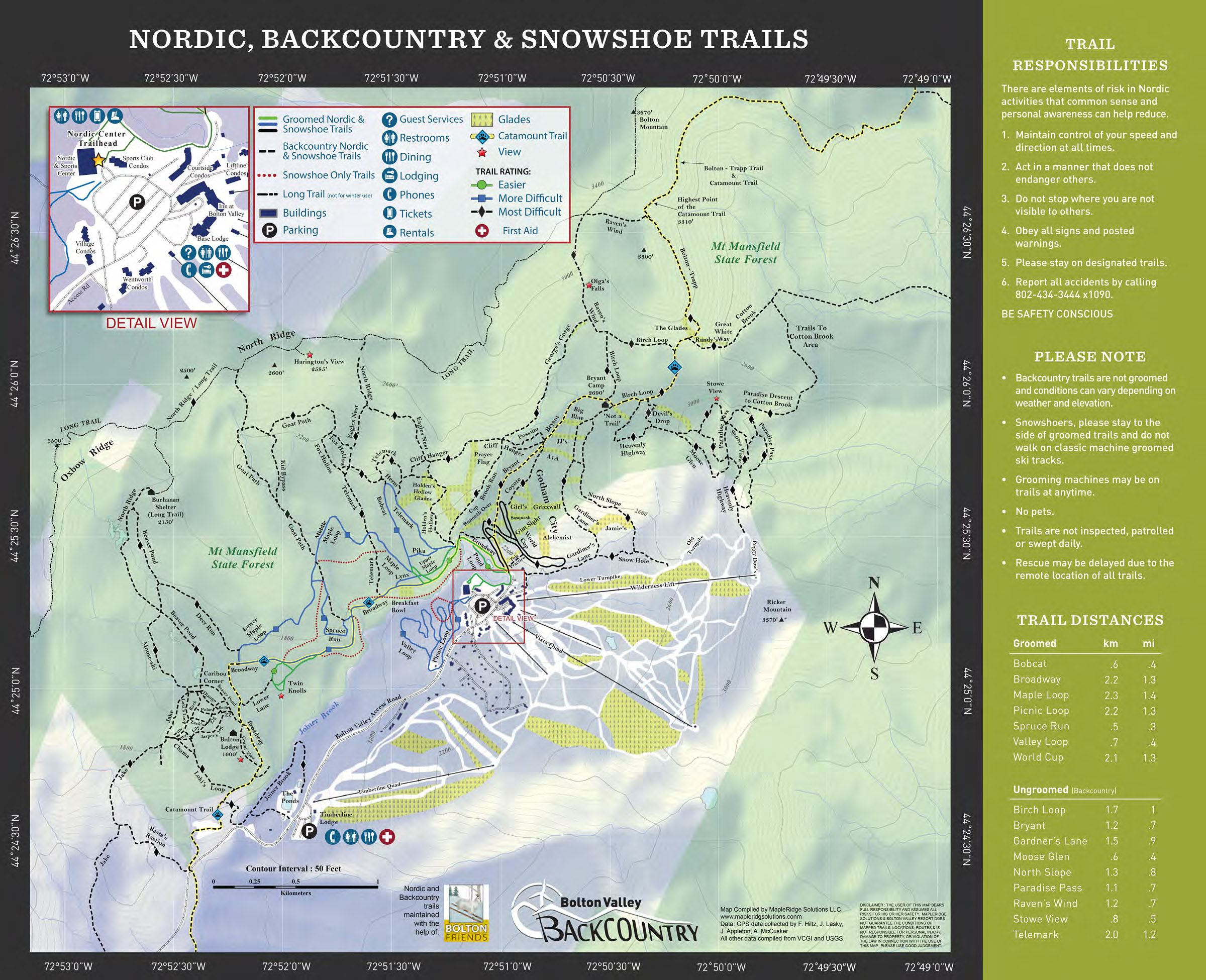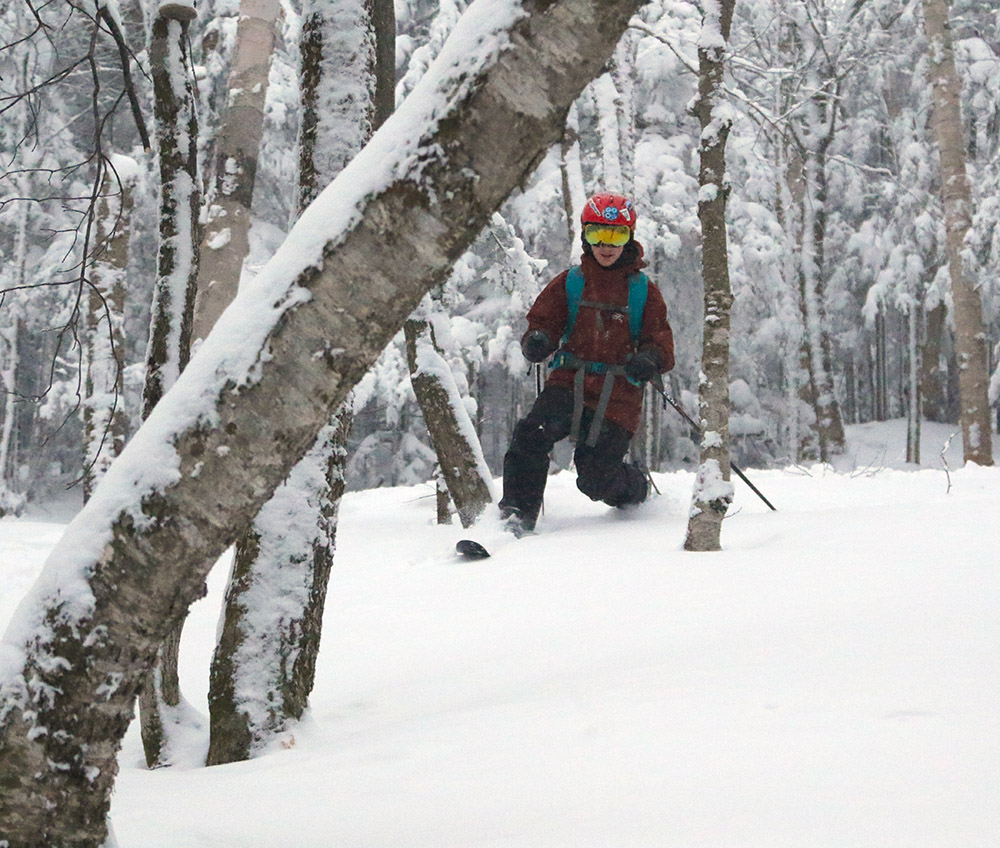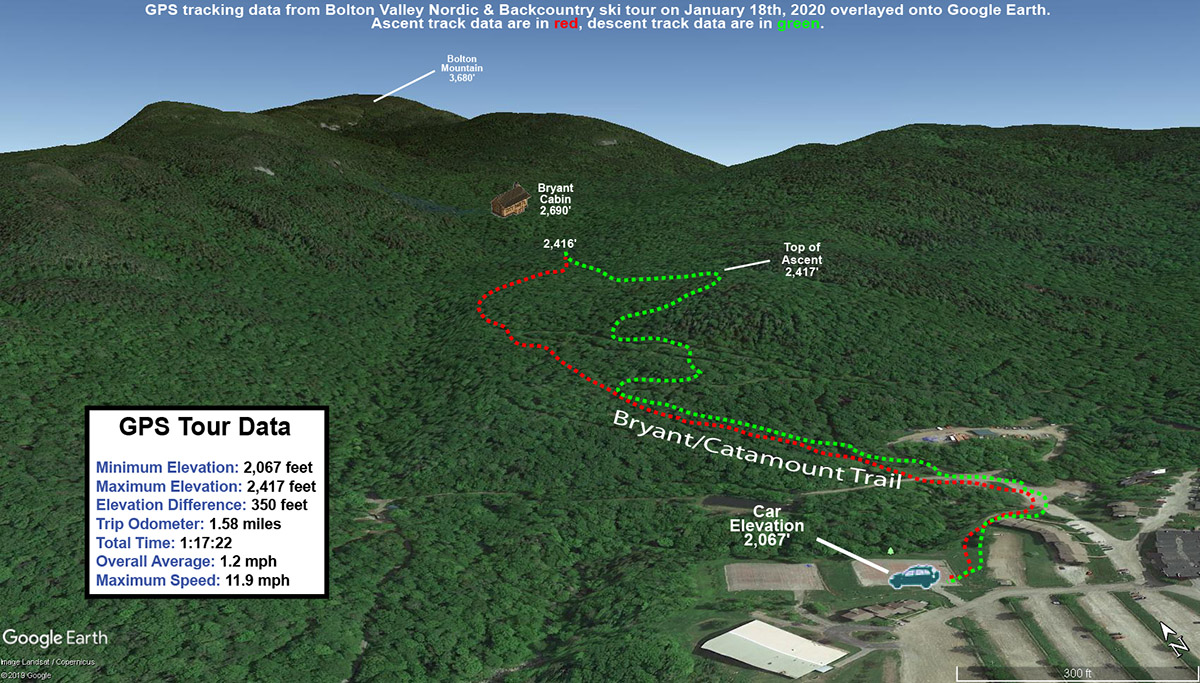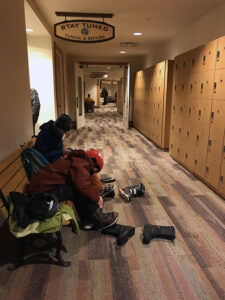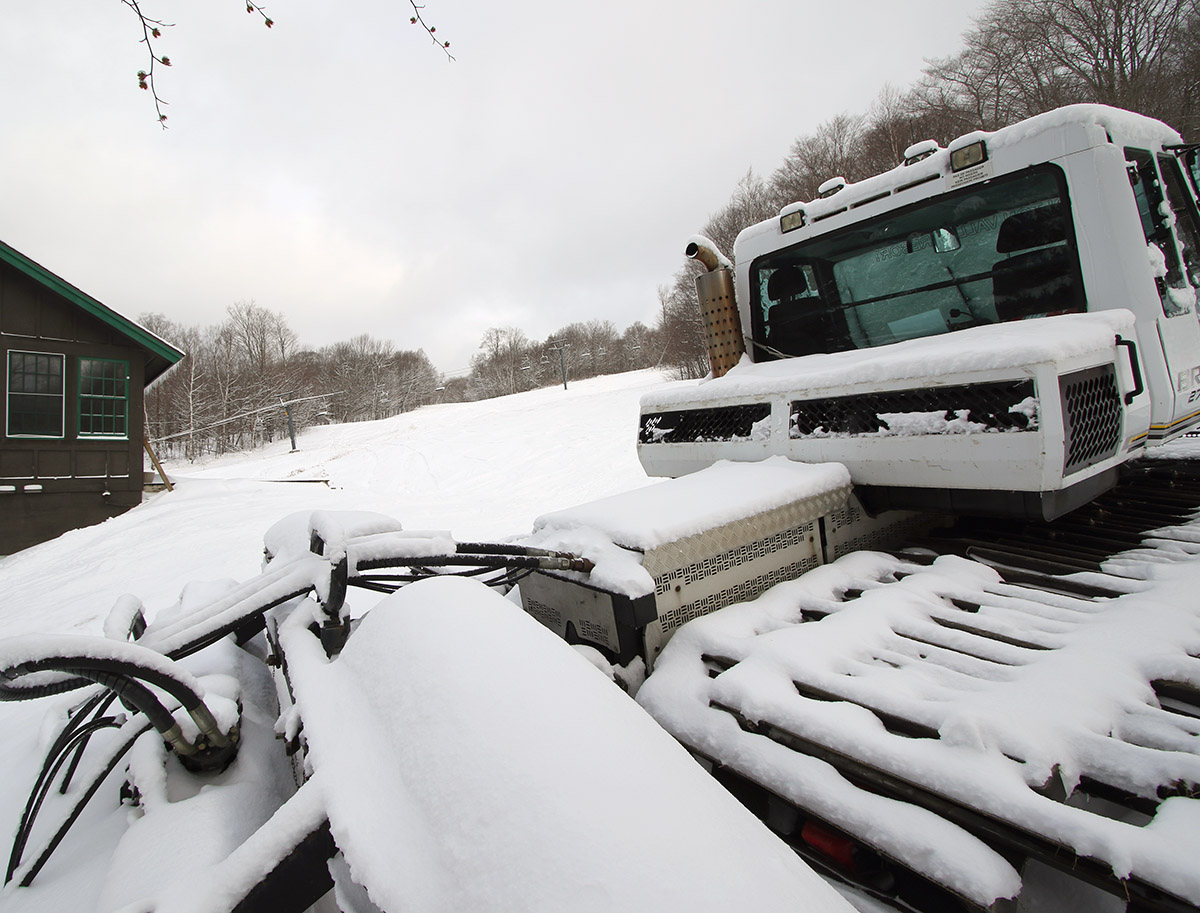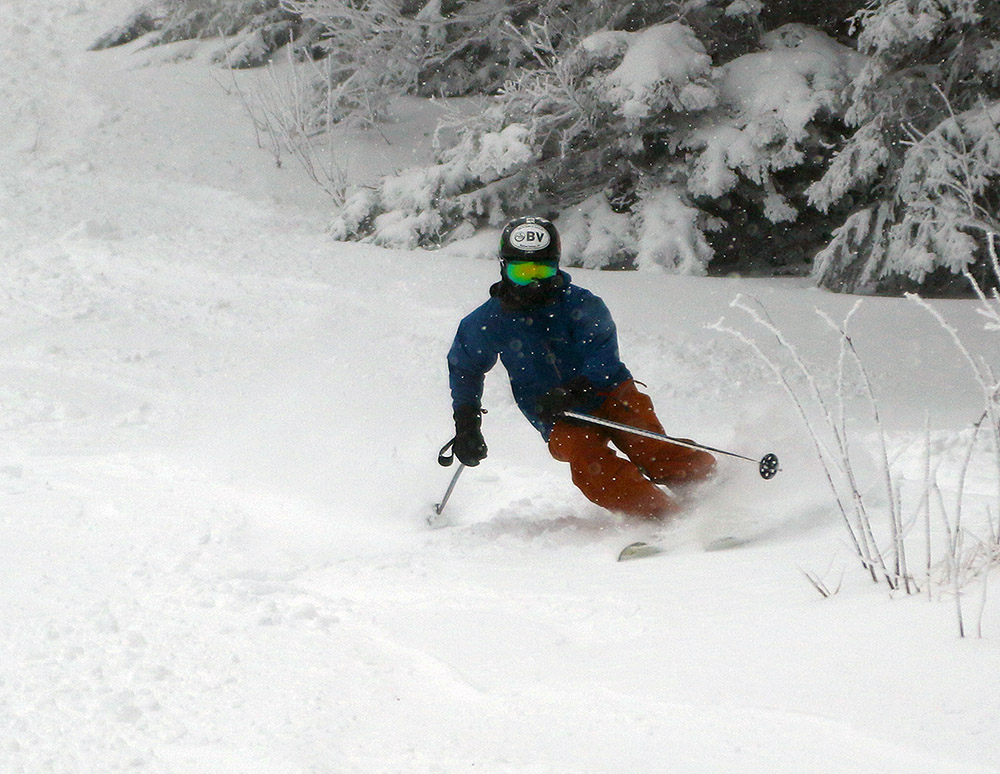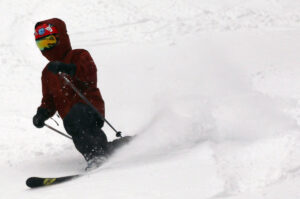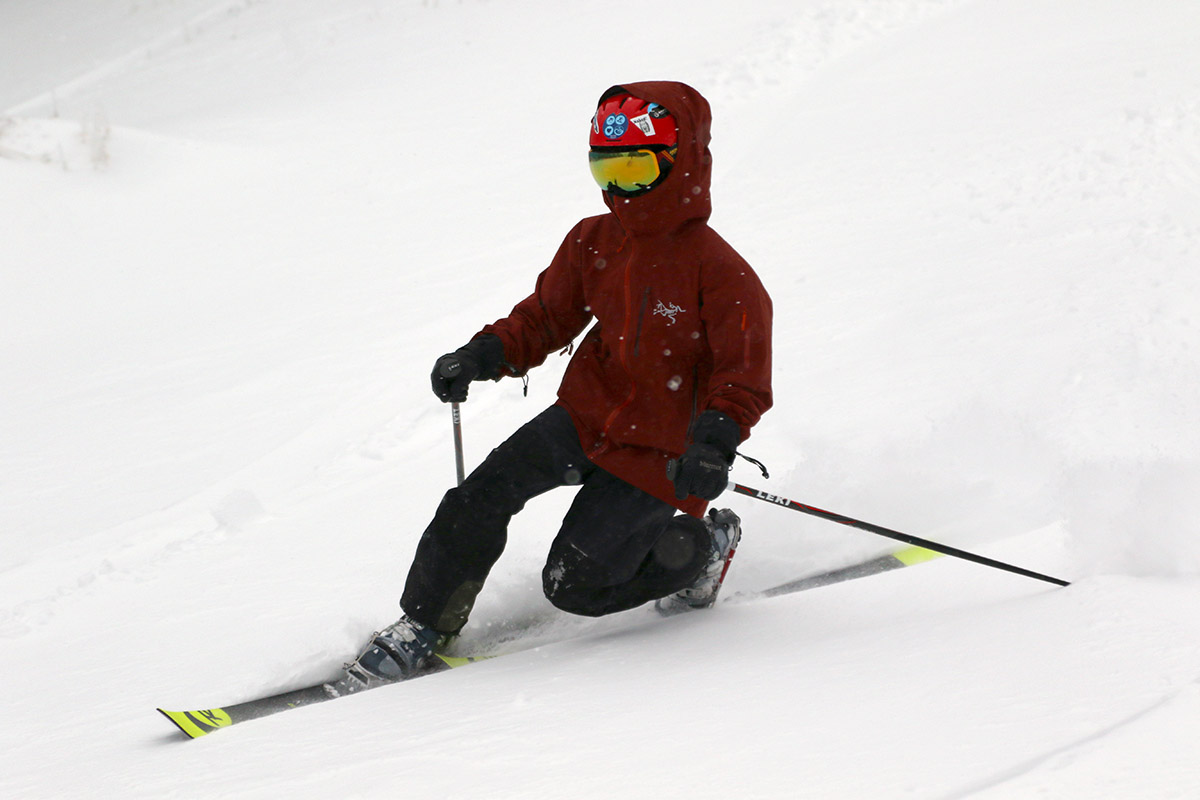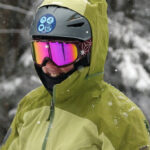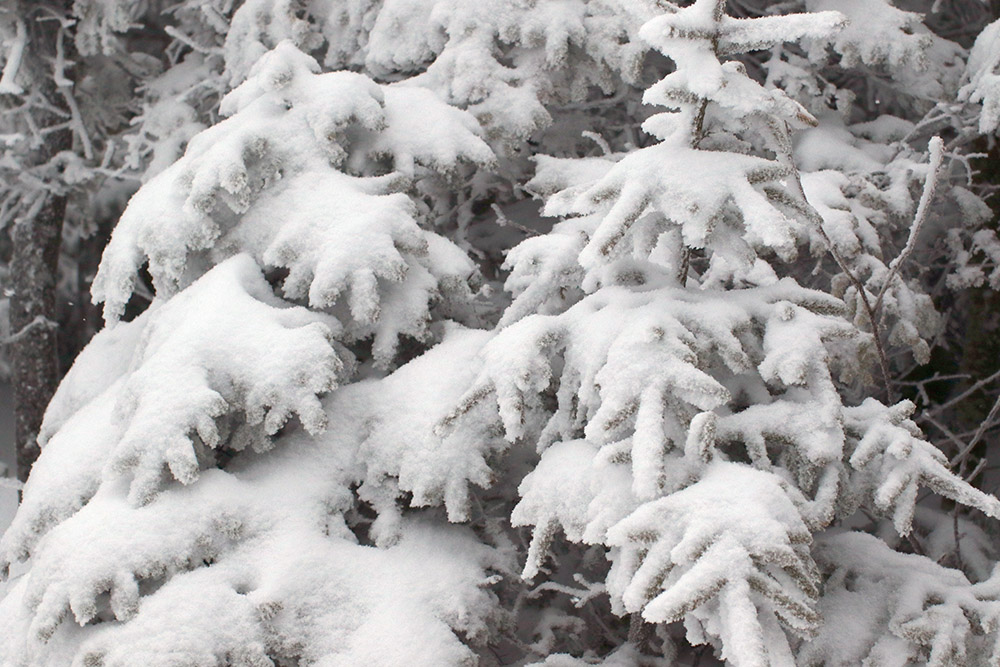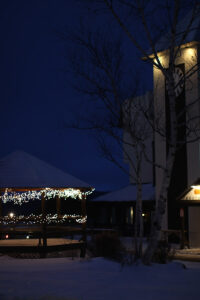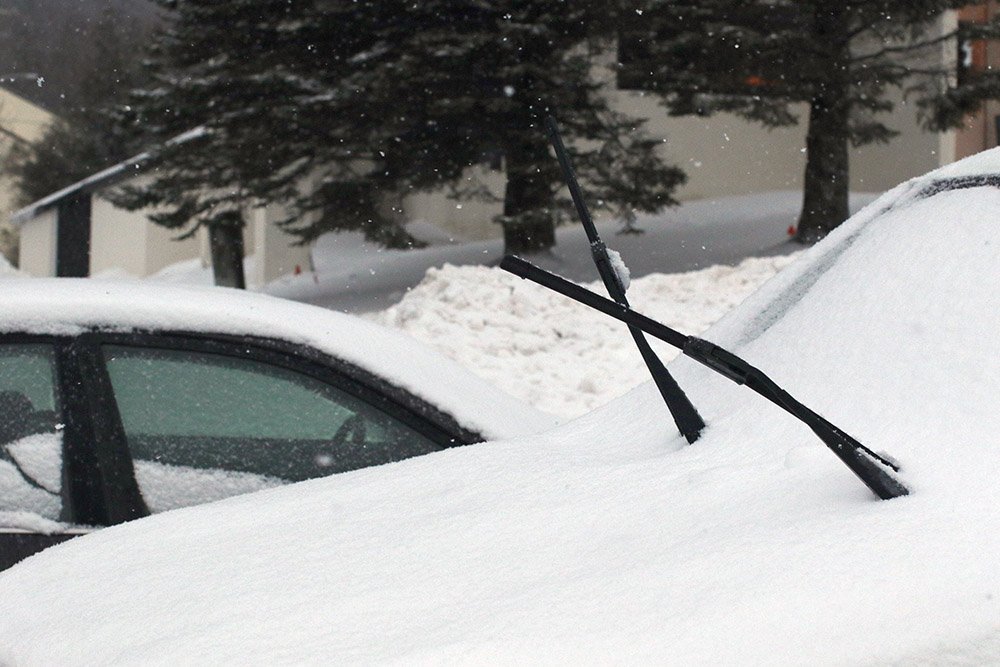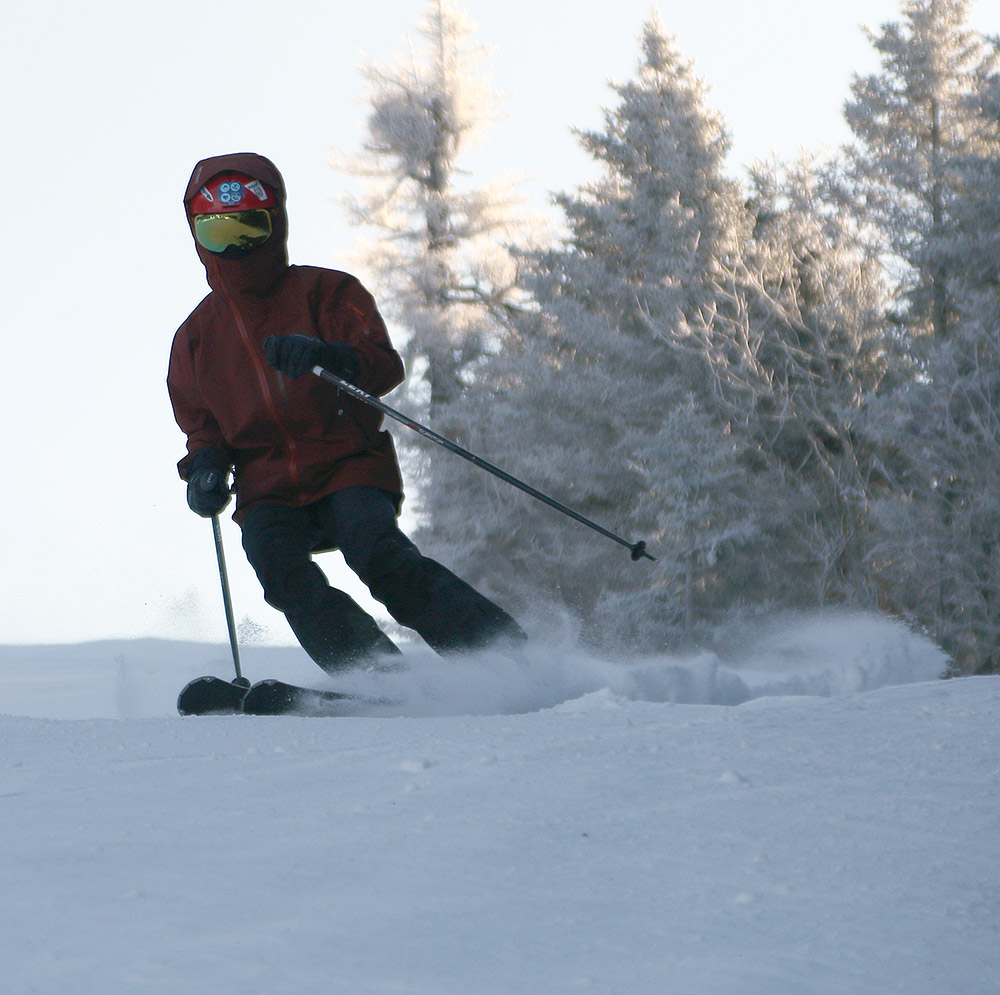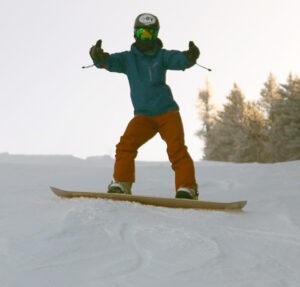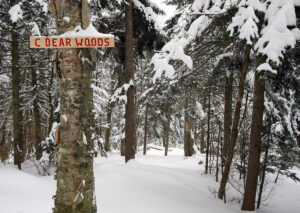
I was out on the slopes Sunday at Stowe during the recent protracted snowstorm that affected our area, and I got out again for a bit of night skiing on Thursday, but today was my first chance to really see how things had unfolded in the off piste areas. I had a feeling that the storm was just what the local backcountry needed though, so I decided to make today’s outing a tour on the Bolton Valley Nordic & Backcountry Network.
Temperatures were really in a sweet spot today – they were just a bit below freezing, which meant that they were extremely comfortable, but not warm enough to ruin any of the powder. I think a lot of people know that today was going to be spectacular out there, because even the lots down by the Nordic Center were filling up when I arrived around 10:00 A.M. The upper tennis court lot was already filled, so I had to head to the lower one, but I got a nice trailside parking spot that let me gear up and jump right onto Broadway.
“The depths of powder I’d found down at the ~2,000’ Village level were generally in the 10-15” range, and up there in the 2,300-2,400’ elevation range I was finding a fairly consistent 16” of powder.”
I needed to pick up Ty from work at noon, so my plan was a quick tour out to the Holden’s Hollow area to get in some powder turns. Consistent with the parking lots, there were people all over the Nordic trails, and a number heading out onto the backcountry trails as well. Once I got up onto the Telemark Trail I didn’t see anyone else around however, and based on the skin track it looked like only about 3 or 4 people had even been out on that part of the network recently.
I had to break trail on the final stretch up to the ridgeline above Holden’s Hollow, and once I’d crested I found myself with a vast area of untracked snow below me. The depths of powder I’d found down at the ~2,000’ Village level were generally in the 10-15” range, and up there in the 2,300-2,400’ elevation range I was finding a fairly consistent 16” of powder.
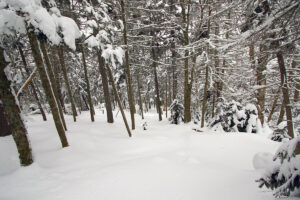
As I switched over for the descent, I noticed a trail sign just down the ridgeline from me, and figured it was one of the markers for some of the Holden’s Hollow Glades. Once I headed over to it though, I saw that it read “C Bear Woods”, and I realized it was a sign I’d never seen before. The sign looks new, so it’s either an area that was recently updated for skiing, or perhaps folks just got around to putting up a sign. Whatever the case, the glade below me was entirely untracked, and the powder was excellent. As I encountered on Thursday, there was a bit of a crust buried within the pack in some spots, but in this case it was either absent or buried deep enough that it was inconsequential.
I was surprised to find that the run actually brought me down on the back side of the ridge, which would have been great for doing another lap, but unfortunately I didn’t have time. I cut eastward through the trees and got myself over to the east side of the ridge where I was able to descend back to the Telemark Trail and Broadway with more untracked powder turns.
From the pump house/bridge area, I re-skinned my skis for my return to the Village – I’ve learned the investment of a couple minutes into putting on your skins is well worth it for that return trip with its slight uphill inclines.
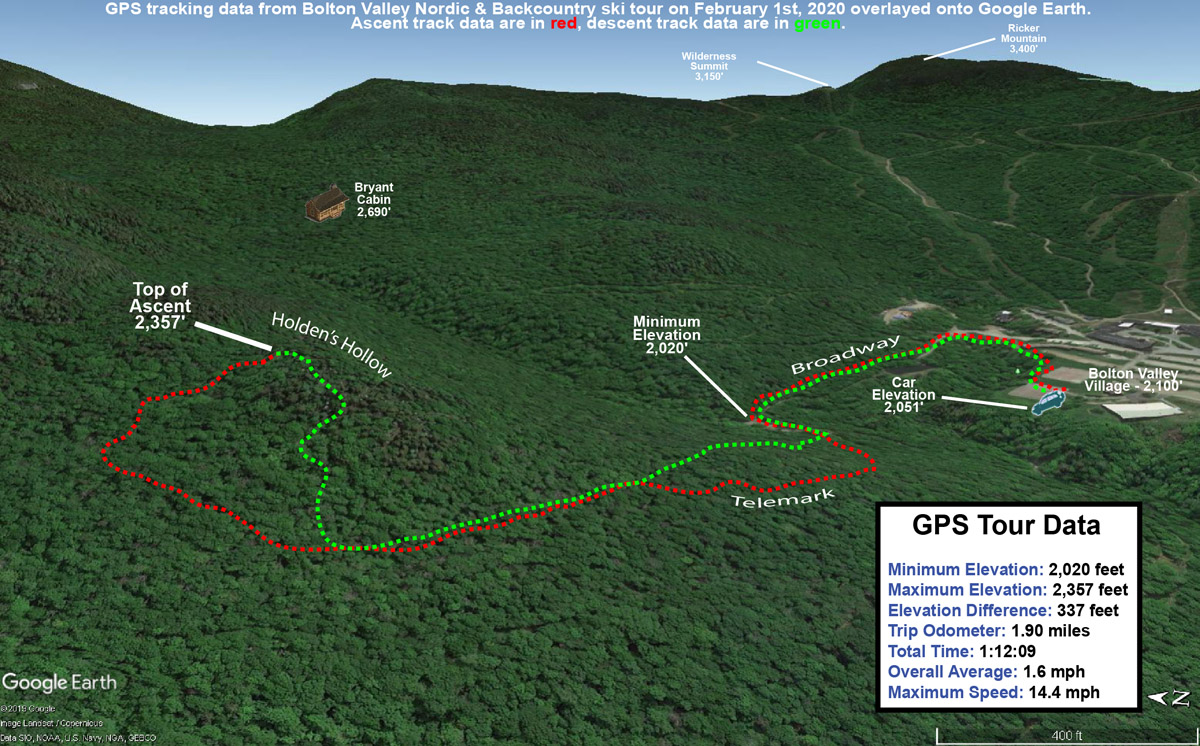
When I got back to my car a bit before noon, even the lower tennis court lot had filled, and the parking lots in general looked packed to the gills. The mountain was definitely doing a booming business, and I guess that shouldn’t be surprising on a midwinter Saturday with a recent resurfacing of the slopes, full operation, and perfect temperatures.
